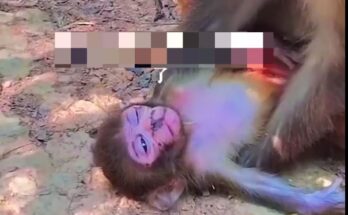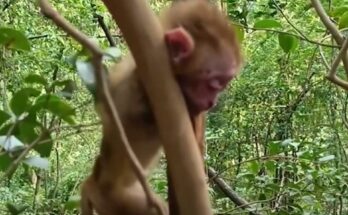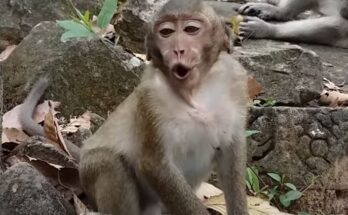In the animal kingdom, interactions between species or within the same group can sometimes be surprising, even troubling to observe. One such instance that has drawn both curiosity and concern is the mistreatment of a small baby monkey by a larger monkey. This behavior, while seemingly cruel to human observers, is often more nuanced and influenced by a range of biological, social, and environmental factors.
Dominance hierarchies are common in primate societies. These hierarchies help maintain order and minimize conflict within the group, but they can also lead to bullying behaviors. Larger or more dominant monkeys may exert their power over weaker members, including baby monkeys. This mistreatment can manifest in various forms, such as physical aggression, withholding food, or exclusion from the group. While it may appear cruel, such actions often reflect the larger monkey’s attempts to assert dominance or establish control over resources.
From an evolutionary perspective, this behavior might also be a way of ensuring the survival of the fittest. If resources like food or shelter are scarce, the more dominant members of the group may prioritize their own needs over the weaker ones. This can result in the mistreatment of younger or less capable monkeys, which may struggle to fend for themselves.
On the other hand, such behavior could also stem from stress or environmental pressures. Monkeys in captivity or those living in areas with limited resources are more likely to display aggressive or unusual behaviors. When tensions are high, smaller or more vulnerable group members, like baby monkeys, can become easy targets for displaced aggression.
Despite the apparent harshness, not all interactions between larger and smaller monkeys are negative. Many primate species exhibit strong parental and alloparental care, where unrelated adults may even assist in nurturing young ones. Understanding why mistreatment occurs in specific scenarios requires careful observation and context.
Human intervention in such situations can be a double-edged sword. While it may seem natural to step in and protect the baby monkey, doing so could disrupt the natural social structure of the group or even cause further harm. Experts often advise observing and understanding these behaviors before deciding on any action.
Ultimately, the mistreatment of a baby monkey by a larger one underscores the complexity of animal social structures. These interactions, while sometimes harsh, offer valuable insights into the dynamics of primate behavior and the challenges these animals face in their environments.


